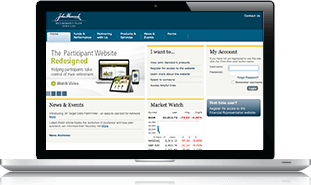Six tips for keeping your finances on track
Over 40% of workers are unhappy about their financial situation,¹ but don’t worry. Developing healthy habits—such as regular reviews of your saving and spending—can help get your finances in better shape. You can follow these six tips as your guide.

[Updated article; original publish date 10/13/23]
1 Assess your financial situation
Understanding your financial strengths and weaknesses can help you take control of your financial situation. You want to look at all aspects of your finances, which could include:
• Budgeting and organizing your money
• Saving and investing for other needs
• Dealing with debt
• Protecting your health and wealth (including the risk of disability)
• Safeguarding your family and possessions (including insurance and estate planning)
If your employer offers a financial wellness program, you may be able to get a comprehensive assessment of your financial well-being. Or if you’re working with a financial professional, you can review your finances together.
2 Review your budget and spending
Your expenses and spending patterns can change over time, especially if the costs of goods and services increase. Routinely checking in on your various accounts can help you understand what money you’re bringing in and spending—and where you may be falling short.
If you can view your bank and investment account(s) online, you can get the basic information you need to review your budget. Consider using an online tool or app that syncs all your accounts, making it easier for you to get an overview of your finances. Some workplace retirement plans provide access to these tools, at no cost to their employees.
3 Start or rebuild your emergency savings
Have you dipped into your emergency savings to manage through an unexpected expense? If so, that's what it’s there for—to help you through an emergency without having to borrow from credit cards, banks, friends, or family.
Remember to replenish it to prepare for the next emergency, whenever it may come. Consider setting up an automatic fund transfer from your bank account into a separate emergency savings account, so you’re not tempted to spend it.
4 Explore options for managing your debt
Having to pay off debt can add to your financial stress. Consider paying more than the minimum amount whenever you can and paying off your high-interest debt as soon as possible.
Look at your outstanding debt and identify:
- How much you owe and to whom
- The interest rates you’re paying
- If you’re making the minimum payment or more
- Options to repay debt such as student loans
5 Prepare for living longer in retirement
What if you live until you’re 110? While this might seem far-fetched, it’s more realistic than you may think. The number of people aged 100 and older is expected to quadruple over the next 30 years.2 Taking control of your finances today can help make your money last potentially decades spent in retirement.
One of the easiest ways to prepare for your financial future is by contributing to your workplace retirement plan, such as a 401(k) or 403(b). You can set up automatic payroll deductions, take advantage of potential tax savings, and build your balance through matching employer contributions, if offered by your plan. But how much should you save from each paycheck? Consider:
- Saving at least enough to earn your employer’s full matching contribution—and more, if you can
- Increasing your plan contributions automatically each year—your plan may offer this option—so you don’t have to remember
- Basing your contributions on your projected retirement expenses—some retirement plans have online tools you can use to determine the right amount
Every dollar you save and invest today can potentially grow through compound interest, where your investment earnings generate even more earnings.
6 Consider getting investment advice
Once you enroll in your workplace savings plan, you need to choose investments, including stocks, bonds, and mutual funds, to give your money a chance to grow. Based on your comfort level and preferences, you may want some help in selecting and managing your investments. Consider some of your options:
- Do it yourself—selecting and managing your investments on your own gives you full control but requires time and at least basic investment knowledge.
- Target-date funds—if you prefer one-stop shopping, you can elect to invest in a target-date fund, if your plan offers one. These funds use preset strategies to invest your money based on your age and the year you expect to retire.
- Managed accounts—your workplace retirement plan may offer a managed account option. This service uses technology, automated portfolio management tools, and your own data to create a personalized investment strategy tailored to your financial situation, risk tolerance, and goals.
- One-on-one guidance—if you have a more complex financial situation or simply prefer someone else to manage your money, consider working with a registered investment adviser. They can help you set and prioritize your financial goals, manage your investment portfolio, and create a comprehensive retirement plan just for you.
Focus on improving your financial health
Whether you’re in your 20s, 30s, 40s, 50s, or 60s and up, you have opportunities to improve your financial health. Many employers offer financial education and wellness programs, and most workplace savings plans offer retirement planning, budgeting, and savings tools at no cost to their employees. Sign in to your retirement plan account to discover all your available resources. Then, set a regular schedule to review your finances, maybe once or twice a year, to track your progress and make changes, if needed, so you can confidently plan for living longer and better.
1 In June 2024, John Hancock commissioned our tenth annual financial resilience and longevity survey with the respected research firm Edelman Public Relations Worldwide Canada (Edelman). An online survey of 2,623 John Hancock plan participants was conducted between 05/17/24 and 06/03/24 and 525 retired Americans, sourced through Angus Reid’s research panel, was conducted between 05/13/24 and 05/28/24. The objectives of the study were to learn more about individual stress levels, their causes and effects, strategies for relief, and to provide custom insights around how retirees are faring in retirement. John Hancock and Edelman are not affiliated, and neither is responsible for the liabilities of the other 2 “U.S. centenarian population is projected to quadruple over the next 30 years,” Pew Research Center, 1/9/24.
Important disclosures
Important disclosures
For complete information about a particular investment option, please read the fund prospectus. You should carefully consider the objectives, risks, charges and expenses before investing. The prospectus contains this and other important information about the investment option and investment company. Please read the prospectus carefully before you invest or send money. Prospectus may only be available in English.
Although the target-date funds are managed for investors on a projected retirement date timeframe, the fund’s allocation strategy does not guarantee that investors’ retirement goals will be met. The target date is the year in which an investor is assumed to retire and begin taking withdrawals.
It is your responsibility to select and monitor your investment options to meet your retirement objectives. You should review your investment strategy at least annually. You may also want to consult your own independent investment or tax advisor or legal counsel.
This content is for general information only and is believed to be accurate and reliable as of the posting date, but may be subject to change. It is not intended to provide investment, tax, plan design, or legal advice (unless otherwise indicated). Please consult your own independent advisor as to any investment, tax, or legal statements made.
MGR1030254938078


